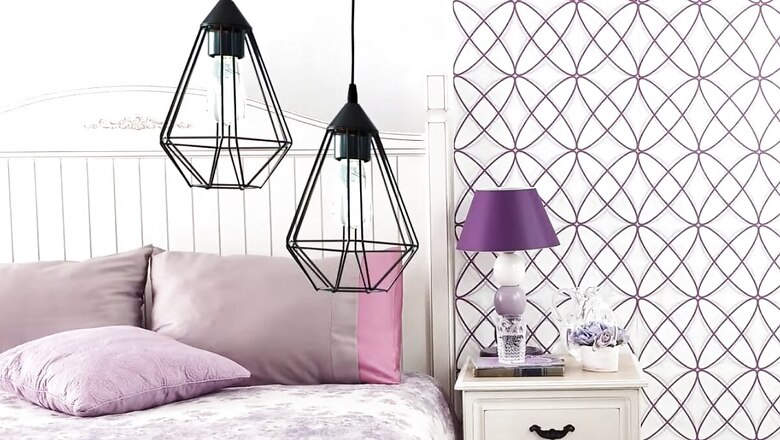
214
views
views
Whether through color choices, layout adjustments, or personal touches, interior design has the power to transform not only your home but also your mental state.
Interior design plays a crucial role in enhancing mental well-being, offering numerous benefits that can positively impact your daily life. Experts in the field share their insights on how thoughtful design choices can lead to a healthier, happier you.
- Reduces Stress and AnxietyAccording to Nikita Mohan, Founder of Vilasa Luxury Living, calming colors, natural elements, and minimal clutter are key to creating a serene atmosphere. These elements help reduce stress and anxiety by promoting a sense of peace and tranquility. Incorporating plants, using soft color palettes, and maintaining an organized space can significantly lower stress levels.
- Improves MoodBright lighting, vibrant colors, and uplifting artwork are essential in boosting mood and energy. “The right lighting and color schemes can transform a space into a vibrant and lively environment,” says Mohan. Incorporating cheerful artwork and decor can further enhance the mood, making spaces feel more welcoming and joyful.
- Enhances SleepGood interior design also contributes to better sleep quality. Dark colors, soft textures, and cozy bedding are recommended by Mohan to create a restful and soothing bedroom environment. These elements help signal to your body that it is time to unwind and sleep, leading to more restorative rest.
- Increases Self-EsteemInspirational decor and personalized spaces can foster confidence and positivity. Mohan emphasizes that spaces reflecting personal tastes and achievements can boost self-esteem. Whether through motivational quotes, personal photos, or unique decor items, these touches make a space truly yours and uplift your spirits.
- Supports MindfulnessCreating meditative spaces with natural elements encourages mindfulness and presence. Mohan suggests incorporating features like water fountains, greenery, and comfortable seating areas to facilitate relaxation and mental clarity. These spaces serve as a retreat for quiet reflection and mindfulness practices.
- Fosters Social ConnectionsInterior designer Tushar Joshi of Utkarsh Vastukarn highlights the importance of welcoming layouts and comfortable seating in promoting social interaction and community. Open floor plans, communal tables, and inviting seating arrangements can encourage conversations and strengthen relationships, fostering a sense of belonging and connection.
- Encourages CreativityStimulating colors, textures, and art supplies can inspire imagination and self-expression. Joshi believes that a well-designed creative space can motivate individuals to explore their artistic side. Whether it’s a home office, studio, or playroom, incorporating elements that spark creativity can lead to increased productivity and personal satisfaction.
- Provides Sense of ControlPersonalized spaces and organized systems empower individuals to feel in control. Interior Designer Ekta Verma explains that having a space tailored to your needs and preferences can enhance your sense of control and order. Organized storage solutions and functional layouts contribute to a more manageable and harmonious living environment.
- Offers Emotional ComfortCozy nooks and comforting decor provide a sense of security and comfort. Verma emphasizes the importance of creating spaces that offer emotional solace. Soft furnishings, warm lighting, and personal mementos can make any room feel like a safe haven, providing comfort during stressful times.
- Promotes Well-BeingAccess to natural light, good air quality, and ergonomic design support overall well-being. Verma advocates for incorporating elements that improve physical health and comfort. Natural light boosts mood and energy, while good ventilation and ergonomic furniture ensure a healthy living space.
- Reflects Individuality and Personal StyleVerma also highlights the importance of creating personalized spaces that reflect individuality and personal style. Customizing your living areas to match your personality and preferences not only makes your home unique but also reinforces your identity and self-worth.
- Incorporates Sensory ExperiencesIncorporating sensory experiences like scented candles or essential oils can enhance the ambiance and overall feeling of a space. Verma suggests using these elements to create a multisensory environment that promotes relaxation and well-being.
By incorporating these design elements, individuals can create spaces that support their mental health and well-being, leading to a more positive and fulfilling life. Whether through color choices, layout adjustments, or personal touches, interior design has the power to transform not only your home but also your mental state.


















Comments
0 comment